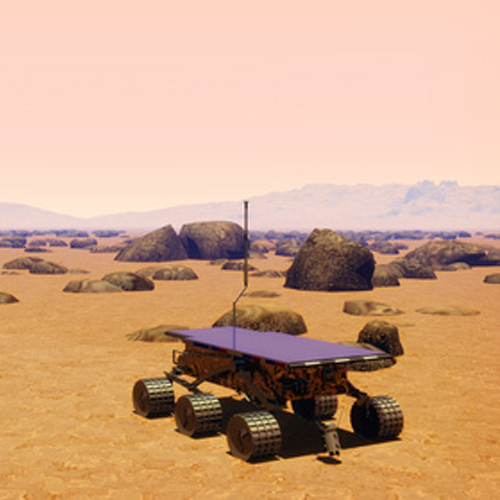On Thursday, NASA revealed that one of the many bells and whistles on its next generation Mars rover includes ground-penetrating radar (GPR).
NASA plans to send the rover to Mars in 2020 to join its predecessors, Opportunity and Curiosity. The newest rover, currently being referred to as Mars 2020, will be equipped with even more technology than the previous rovers, including a super zoom camera, lasers and GPR scanning.
Mars 2020 will continue in the Curiosity’s footsteps, but NASA hopes that the groundbreaking technology equipped on the rover will collect new and unprecedented data from the Martian landscape.
The seven new instruments were selected out of a batch of 58 international proposals and have a total value of $130 million. The design of the Mars 2020 is based largely on the design for Curiosity, which landed successfully on Mars in 2012 and has been searching the surface for signs of life.
Mars 2020′s new equipment includes an advanced camera called Mastcam Z, a new laser, an ultraviolet laser to scan for organic molecules, a tool to produce oxygen, a weather station, X-ray equipment, and GPR systems to see below the surface.

Ground-penetrating radar uses high frequency radar pulses to generate images of the subsurface. It can detect small objects in the ground and changes in material as well as cracks and voids. In terrestrial use, GPR surveys are frequently employed to locate buried utility lines and other structures.
The GPR equipment designed for Mars 2020 consists of an advanced piece of technology called RIFMAX (or Radar Imager for Mars’s Subsurface Exploration). As the rover drives along the surface of Mars, GPR surveys will use shallow profiling to gather information on the geological processes that formed the sedimentary surface of the planet. NASA is also expecting to find evidence in the GPR surveys that Mars was once a habitable environment.
Previous scans of the surface didn’t have the third dimension to represent elapsed time on the Mars landscape. Researchers hope that this new perspective provides them with a wealth of new data about our neighboring planet.
But the Mars 2020 won’t just teach us about the past. It’s also looking to the future. The launch of Mars 2020 could be a major step toward eventually putting humans on Mars, according to NASA administrator Charles Bolden. In fact, humans may walk on Mars within the next 15 years with the help of information from NASA’s rovers. Since Mars can sustain life, human missions will need fewer supplies, and the surface and weather information from Mars 2020 will help NASA prepare for other factors.
Thanks to Mars 2020, we may see the first human step on Mars within our lifetimes.
